Cabbage Kolobok is a late ripe white variety. It is widely used for its excellent taste, long-term keeping quality and high content of beneficial micro and macronutrients.
Table of contents
General characteristics of cabbage varieties Kolobok
Kolobok is a variety with high biological and morphological uniformity. Plants are demanding to the soil. Prefer neutral or alkaline acidity and increased fertility.Poor tolerate lack of moisture.
Cabbage is cultivated by the seedling method. Planting of young plants is made in 1.5-2 months after sowing the seeds. The harvest ripens amicably. Aging period - 165 days. Collection produce in late September - early October.
Young plants have a semi-raised compact outlet. Height up to 40 centimeters. Diameter - no more than 55 centimeters. Sheets according to the description of a dark green color, the shape is obovate, the surface is smooth and has a wax coating.
Matured heads of cabbage are distinguished by high density and even rounded shape. Height is up to 20 centimeters. Weight of one head to 4.5 kg. Outdoor color saturated green hue. Tastes are great.
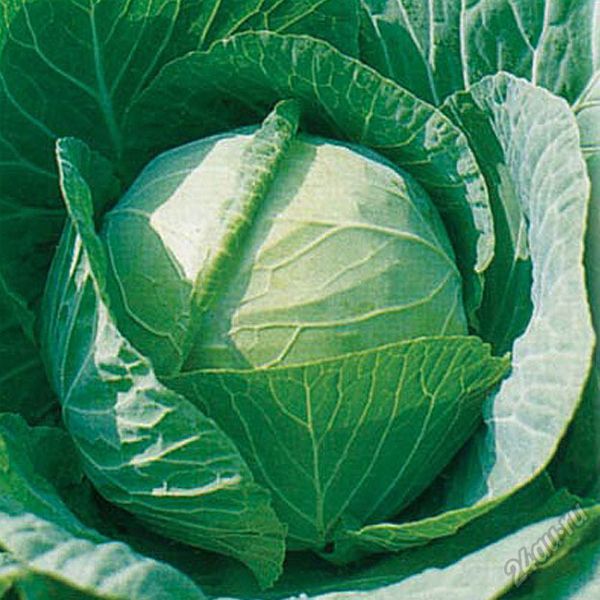
10-12 kilograms of crop per square meter. Cabbage has a good presentation. Differs in a long keeping. Suitable for fresh consumption, pickling.
Advantages and disadvantages
Kolobok widespread among gardeners due to the large number of advantages.
The advantages of the variety and its hybrids include:
- high taste qualities;
- yield;
- resistance to diseases and pests (especially fusarium);
- keeping quality and transportability;
- product appearance.
Of the shortcomings should be noted demanding of soil composition and watering. Plants do not tolerate the increased acidity of the soil and require fertilization. The lack of watering leads to a decrease in the growth rate of plants.
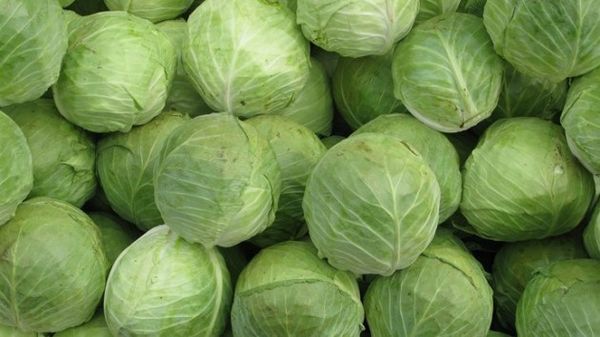
Beneficial features
It contains in large quantities biotin, rutin, choline, vitamin K. From micro and macro elements are present iron, phosphorus, calcium, sodium, zinc, iodine, honey, selenium, chromium.
Regular consumption of cabbage contributes to:
- normalization of digestion;
- prevention of scurvy;
- improve bowel performance;
- cleanse the body of toxins;
- thyroid disease prevention;
- removal of hangover;
- splitting carbohydrates.
Cabbage juice and leaf are widely used in traditional medicine to prevent constipation, hemorrhoids,wound healing and ulcer treatment.
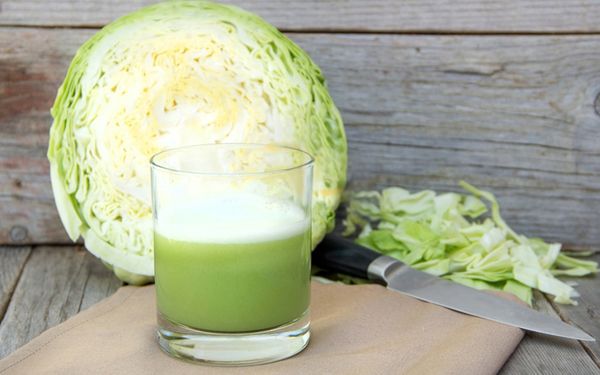
Soil preparation and site selection
Cabbage refers to photophilous frost resistant plant varieties. The optimum daytime temperature is 18 degrees. Higher temperature plants endure badly. In connection with this, lighted fertile areas are selected for planting.
Site preparation is carried out in the autumn. It is to adjust the acid-base environment.
Liming is produced at the rate of 3.5 kg per square meter. The substances used are chalk, lime ash, slaked lime. In the spring, organic fertilizer is produced.
Seedling preparation
Kolobok divorce rassadnym in a way. Sowing of seeds is carried out in the first decade of March. In the case of sowing directly into the soil in a greenhouse or under the film - in the early to mid-April.
For breeding Kolobok seedling method, it is necessary to prepare the soil in advance.On 7 parts of peat, 2 parts of humus and 1 part of sod and mullein are used.
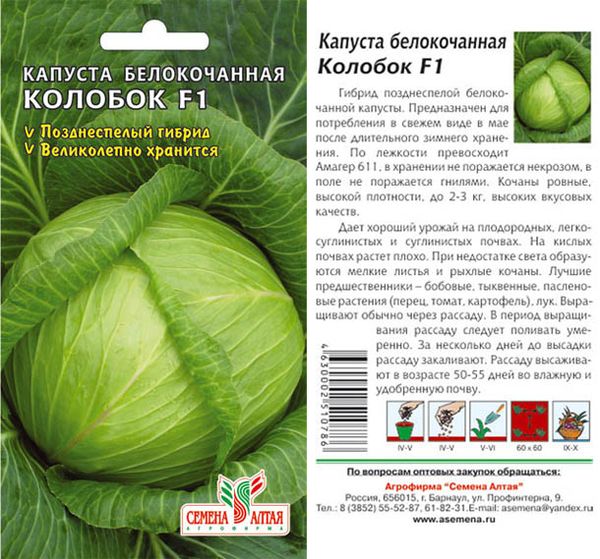
Seedlings are prepared in several stages.
- Hardening seed. To do this, they are sequentially soaked in warm water (+50 degrees) for 20 minutes, then placed in the cold for 2 minutes.
- Sowing seeds. Seeds buried in prepared containers for 1 centimeters. After sowing, water or spray the top layer of soil with a spray gun. The first week the seedlings are kept at a temperature of from +6 to +12 degrees, then transferred to a room heated to +20 degrees.
- Plant picking. At the stage of 2 leaves, seedlings dive with a distance of 6 centimeters between the roots.
- Landing. Plants are planted in the ground no less than 1.5 months.
The seedless method involves sowing seeds directly into the soil under the film. It allows to achieve more dense and large heads.
Features agrotehnika
Care for cabbage should be divided into two periods:
- in the first two weeks after disembarking;
- at a later time.
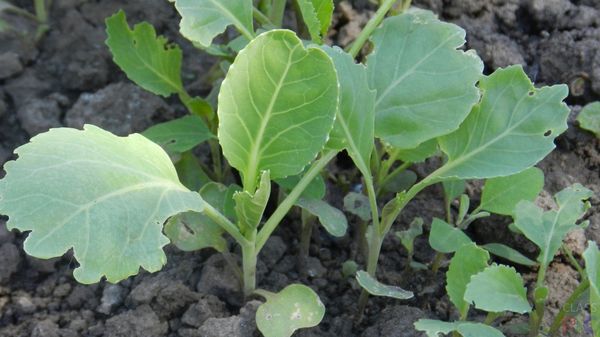
In the open ground seedlings planted in the first half - mid-May. Optimum daytime temperature 12-18 degrees. Cabbage belongs to frost-resistant plants, so seedlings can withstand short frosts.
Plants are buried to the bottom of the leaves. If the plot is chosen sunny, then the seedlings need to be shaded. Watering is done 2-3 times a day for the first 2-3 weeks. After each watering is loosening the soil and hilling bushes. Soil moistening stops 2 weeks before cutting heads.
Subsequently, water the plants abundantly as needed. Variety Kolobok poorly tolerated moisture deficiency. For this reason, the soil must be constantly moistened. The best is 10 l / 1 m.
Cabbage requires feeding 3-4 times per season:
- the first stage is carried out 20 days after planting;
- second - 10 days after the first feeding;
- third - 10 days after 2 feeding;
- fourth - 20 days before harvest.
For the first two stages of fertilizing it is recommended to use organic fertilizers. For the third, suitable compounding compositions recommended for cabbage. The fourth dressing is recommended potash-nitrogen fertilizers.
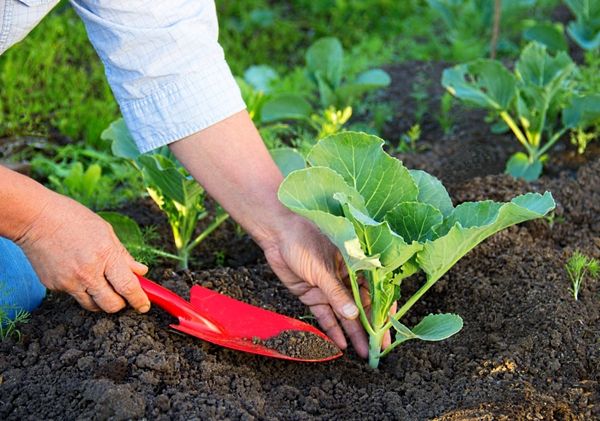
Diseases and pests
Cabbage Kolobok is genetically resistant to most common diseases:
- gray rot;
- white rot;
- mucous and vascular bacteriosis;
- fusarium wilt;
- Alternaria;
- necrosis.
Experts note that the variety is susceptible to tleand may also be damaged red fly. To combat using complex preparations against pests or traditional methods in the form of solutions of ash or ash-tobacco mixture with pepper.
Also reduce the impact of pests allows watering over the head during the period of its formation. Water washes away the available larvae from the sheet and cleans its surface.
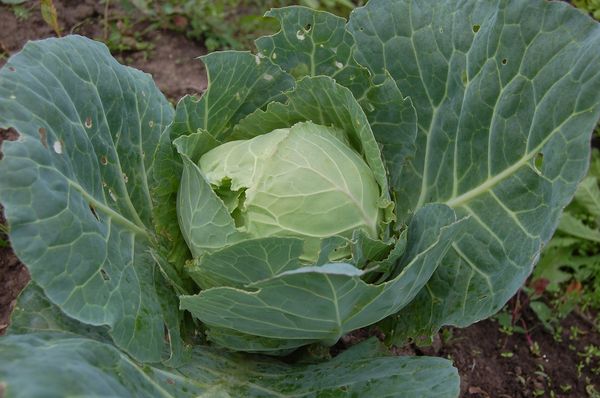
Harvesting and Storage
Kolobok refers to late-ripened cabbage varieties. Ripening of the harvest occurs together. The main signs of aging include:
- hardness and elasticity of heads;
- termination of mass buildup;
- yellowing of the lower leaves.
Harvest is considered optimal. in September or October in dry sunny weather.Cabbage tolerates transportation and is subject to long-term storage in a cool, dark room.
Kobolok is a grateful variety of cabbage. Compliance with the rules of agricultural technology allows you to achieve a bountiful harvest, which will persist for a long time.
